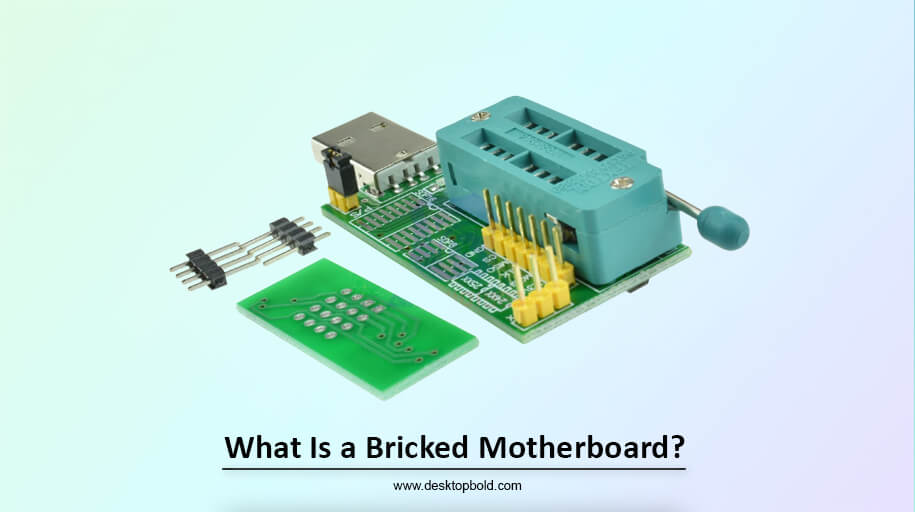If you want to test your motherboard, a multimeter is helpful. You can identify whether your motherboard receives enough power by checking its voltage. It would be best if you also examined for breaks and leakage. In this article, I will analyze how to test a motherboard with a multimeter and ensure it’s in perfect condition.
How to check whether your Motherboard is in Good Condition?
If you want to keep your processor running smoothly and safely, you should check its condition on a regular basis. Examining a few specific areas is possible to determine if your motherboard is in good working condition.
Looking for signs of physical damage is a top priority. There may be something wrong with the motherboard if you see any cracks, dents, or other indications of use and misuse. Make sure there aren’t any missing or dangling parts or wires. Some visual anomalies may indicate that the motherboard needs to be swapped out.
Corrosion is something else to inspect. This frequently occurs with earlier processors and can cause significant issues. If you notice rust, you should replace the processor immediately.
Last but not least, check that the motherboard’s links are tight. Losing connection between components can negatively impact your computer’s efficiency. Always double-check your links to make sure they are firm and safe.
Tools that are used to Test the Motherboard
For testing a motherboard, you will require some of these tools:
- Multimeter
- Voltmeter
- Screwdriver
However, among these tools, a multimeter is the best to run a voltage and detect resistance on the motherboard.
How to Test the Voltage of your Motherboard?
The motherboard’s voltage regulator may malfunction if your computer has trouble starting or fails suddenly. You can do this test with a voltmeter purchased from stores like Amazon. First, take out the power cable and the batteries from your device. Find the 20-pin ATX power connection, typically near the motherboard’s top. Connect the multimeter’s red lead to the power connector’s positive terminal and the black information to a ground terminal after switching the device to the DC voltage setting.
A voltage measurement should appear on the multimeter’s screen. This procedure should be repeated for each voltage reading. If the numbers on your metre are all in the usual range, the problem is probably not the motherboard. You should have it checked out by a professional expert if any of the numbers are noticeably off. Try testing the motherboard’s voltage to clear out hardware issues quickly and easily. An experienced technologist can inspect you if you feel nervous doing it yourself.
How to Test the Capacitors on your Motherboard?
One possible cause of your computer’s problems could be a bad battery. Damage to these parts, which are responsible for holding and distributing electric power, can lead to a wide range of issues. The good news is that checking the performance of capacitors is a simple process. Simply take a voltmeter reading and observe the results to complete the process.
Discover where the capacitors are located on your motherboard. They’ll be spherical, with the word “CAP” stencilled somewhere on them. Find the capacitor’s wires, then connect the multimeter’s sensors to them while in the ohms mode.
If the value goes to infinity, the capacitor is revealed and needs to be changed. A negative measurement indicates a shorted capacitor, which requires its replacement. Between those two numbers indicates that the capacitor is OK and doesn’t need to be changed.
You can replace the bad capacitors after figuring out which ones need to be changed. Make sure you get the right sort and specifications for your motherboard. In order to make sure your motherboard’s capacitors are in excellent functioning order, you only need a few affordable instruments and a little amount of knowledge.
How to Testing Motherboard for Short Circuits?
Testing for short circuits on a motherboard can be done in a few different methods. A voltmeter is typically used because it can test the connection between any two locations. Another process involves using an ohmmeter, a device that measures the resistance between two places.
If you have a voltmeter, switch it to the “continuity” option and place the probes on two spots on the circuit that you suspect are striking. Signs of a short circuit include an audible noise from the voltmeter or a low resistance measurement.
Turn up the ohmmeter’s maximum level and connect the sensors to two spots on the motherboard you suspect are junked together. A low resistance measurement on the ohmmeter indicates a brief connection between the tested locations.
The motherboard can also be inspected visually for charring or other indications of overheating damage. This suggests there was a short circuit, and the component was damaged.
If you find a short circuit on the motherboard, the next step is to figure out what caused it and how to repair it. Problems with components, contacts, or cabling can all lead to electrical shorts. The best course of action is to get expert assistance if you can’t figure out what created the short circuit.
Conclusion
The above-enlisted article, with the topic of how to test a motherboard with multimeter, has concluded that testing a motherboard is not a big deal. You can test it by yourself easily. You can test its motherboard’s various parts separately to check its overall performance. All the steps are mentioned above in detail. Just follow the steps and identify the issues your motherboard is facing. You can make your motherboard’s lifespan more than average with a small effort.
And last but not least, I am sure all your queries will resolve after reading this article. Happy reading!
Frequently Asked Questions
How Do You Read The Voltage On A Motherboard?
Back probing the PSU slots with the black probe on a GND port and the red probe on the grey, green, and purple spaces requires a voltmeter set to the 20 DC voltage range.
How do you check for a short circuit on a motherboard?
Using a voltmeter and checking for a short circuit on a microprocessor is quick and easy. First, make sure the computer is turned off, and all its connections are removed. Then, using the voltmeter, check the connection between the two locations to see if the problem is localized to the motherboard. A short circuit is undoubtedly present if there is no continuity.
How To Diagnose Motherboard With a Multimeter
Turn off the electricity and remove the battery before using the voltmeter on the motherboard. Then, you can check the power supply connections, capacitors, and other system parts by setting the voltmeter to resistance or continuity. Check for measurements significantly off from what you would expect, as this could indicate a defective component.




